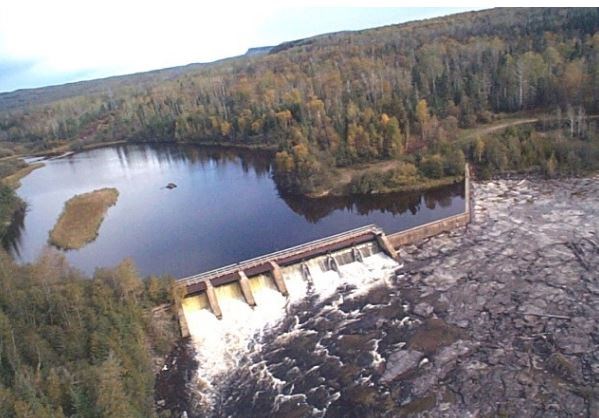THUNDER BAY — Seven years after the Ministry of Natural Resources began an assessment of the impact of removing a dam on the Black Sturgeon River, the dam's fate remains undecided.
Decommissioning the structure is a controversial proposal.
The former Camp 43 dam was built around 1959 for logging purposes, and played a key role in keeping control over the lamprey population in Lake Superior.
However, it also cut off spawning areas for fish species such as walleye, coaster brook trout and sturgeon.
The 53-metre-long dam no longer meets safety requirements.
In 2013, as natural resources minister, Thunder Bay Superior North MPP Michael Gravelle said taking out the structure would help rehabilitate the native fish community in Black Bay,
Gravelle said this, in turn, could lead to the re-establishment of an enhanced recreational fishery, which would have "significant economic and social benefits for surrounding communities."
In 2017 the MNRF released a draft Environmental Study Report for inspection by the public, Indigenous communities, other stakeholders and agencies.
The report prepared by consultants recommended demolishing the dam's concrete aprons and reopening the Black Sturgeon River to migrating fish.
“The benefits to removing the dam are allowing fish access to that additional 70 kilometres of habitat as well as additional spawning habitat,” said Tony Gallo, KGS Consulting environmental scientist.
Gallo said the Northshore Steelhead Association had a legitimate concern when it expressed fear that the move would also reopen spawning grounds for the sea lamprey.
However, the consultants also suggested building a multipurpose lamprey barrier farther upstream, at the outlet of Eskwanonwatin Lake, together with the application of lampricide.
Among other options studied was a plan to establish a netting operation in which sturgeon and walleye could be caught and transported north of the dam to spawn.
Metis family helps fish circumvent the dam
Phil McGuire, who is Metis and a long-time resident of the Nipigon-Red Rock area, has already put that idea into action.
Each spring for the past four years, he and family members have netted hundreds of fish below the dam and placed them back in the river on the other side to continue their journey.
"I'm down there just about every day for two months, scooping up fish to help them spawn. Last year I got about 500 pickerel and 24 sturgeon, This year I only had 100 pickerel and eight sturgeon, so there's a drastic change from the last couple of years. I'm concerned. There's something wrong."
At a recent meeting that included government officials, McGuire said, he learned that "Everything's on hold again because of the change of government. They seem to always have an excuse" not to proceed with removal of the dam.
"There are thousands of fish being destroyed every year. There's pickerel, sturgeon, suckers, whitefish, bass, speckled trout, rainbow, the whole works. They're all being damaged every year. It's a total disgrace."
A spokesperson for MNRF told Tbnewswatch the ministry is currently working with the Ministry of the Environment, Conservation and Parks to determine next steps.
"We continue to monitor the dam and conduct regular inspections to the structure," said Jolanta Kowalski.
McGuire, now 72, became familiar with the Black Sturgeon River in his childhood, and said the argument about the sea lamprey doesn't hold water.
"The people are worried about the lamprey going up the river system. But before the dam was put in there were tons of lamprey in that system. There was still lots of fish, lots of everything."
Black Bay once had the largest population of walleye in Lake Superior, supporting what a government document described as "sizable" commercial and recreational fisheries.
Due to a combination of factors, the walleye population collapsed in 1968.
